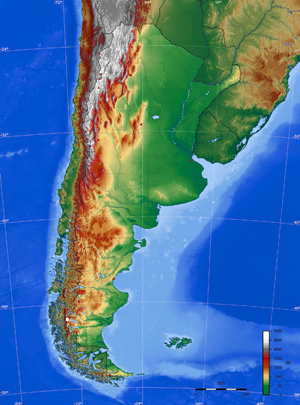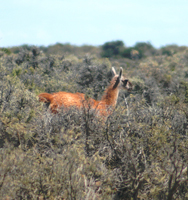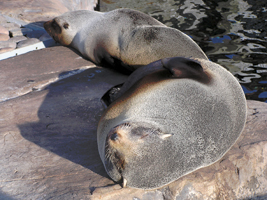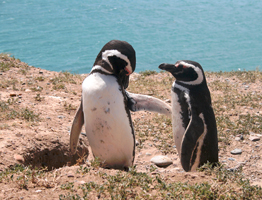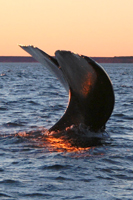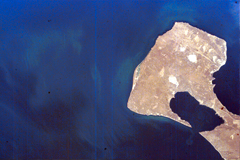Investigating The Valdes Peninsula
The Valdes Peninsula is located in the Chubut province of Argentina and is comprised of approximately 360,000 hectares (1390 miles²). Multiple gulfs surround the peninsula which is linked to the mainland by the Ameghino Isthmus. The San Matías Gulf is located on the northern and northwestern side of the peninsula, the San José Gulf is located to its west, and the Nuevo Gulf is located along the southern and southwestern parts. The Atlantic Ocean is located on the east and southeast side of the peninsula. The inland portions of the peninsula comprise of desert plains marked by a few salt lakes. The relatively barren desert center of the peninsula offers a stark contrast to the coastal regions which are teeming with life.
The gulf waters, particular those of the Gulfs San José and Nuevo, are breeding grounds for numerous marine species including the endangered southern right whale, sea lions, Magellanic' penguins, and elephant seals. These waters provide marine creatures a protected, calm, and shallow area that is an ideal breeding and feeding ground. There is also a large and diverse variety of migratory birds that flock to the peninsula each year. At least 181 bird species live in the area with 66 of them being migratory species. The most numerous birds on the peninsula are the Magellanic penguin which has almost 40,000 active nests spread among five colonies. The area is an important natural habitat for a number of threatened species and is extremely significant to conservationists. In 1999, the Valdes Peninsula became a UNESCO (United Nations Educational, Scientific and Cultural Organization) World Heritage Site for its biological diversity and its esthetic beauty. Being listed as a World Heritage Site by UNESCO is a great honor and means that the peninsula will be preserved for future generations to enjoy.
The physical geography of the peninsula varies as you move toward the inland areas from the coastal regions. Sandy-pebble beaches and cliffs make up the coast of the peninsula along with some wetlands and coastal lagoons. The wetland areas are important staging areas for a variety of migratory birds. The peninsula can be considered as a semiarid region similar to its surrounding region known as Patagonia. Vegetation along the coast is consistent with that of Patagonia and mainly consists of bushy and grassy plains. Bushy plains fade into herbaceous plains with loose sandy soil in the more inland areas. A majority of the peninsula is barren land market by a few salt lakes. The inner regions are inhabited by 33 species including guanaco, mara, rheas, and red fox.
What is a Gulf?
A gulf is a body of water, particularly an ocean or sea, which is surrounded predominantly by land. They tend to consist of a "U" shaped land mass with water at its center flowing outward. Gulfs generally contain warmer and calmer waters compared to the open ocean. Examples of famous gulfs include the Gulf of Mexico and the Persian Gulf.
What is an Isthmus and Peninsula?
Peninsulas are pieces of land which are mostly surrounded by water and connected to the mainland via an isthmus. The isthmus is a narrow strip of land that is bordered by water on two sides and connects the peninsula to the mainland. An isthmus can also be a narrow strip of water, such as the Isthmus of Panama. The Floridian Peninsula in the United States and the Iberian Peninsula, containing Spain and Portugal, are examples of peninsulas.
What is Patagonia?
Patagonia is a geographic region in the southern part of South America that mostly contains steppe like plains. The region comprises of Chile on the western side and Argentina on the eastern side. The land gradually rises into plateaus from sea level on the Pacific and Atlantic Ocean and eventually rises to the Andes Mountains. The western side of the region, between the Pacific Ocean and the Andes, has comparably more rainfall than its eastern counterpart allowing the western side to contain much more vegetation and animal life. Areas closer to the Andes generally contain the most life in the region due to the increased rainfall compared to the more arid, lowland areas.
